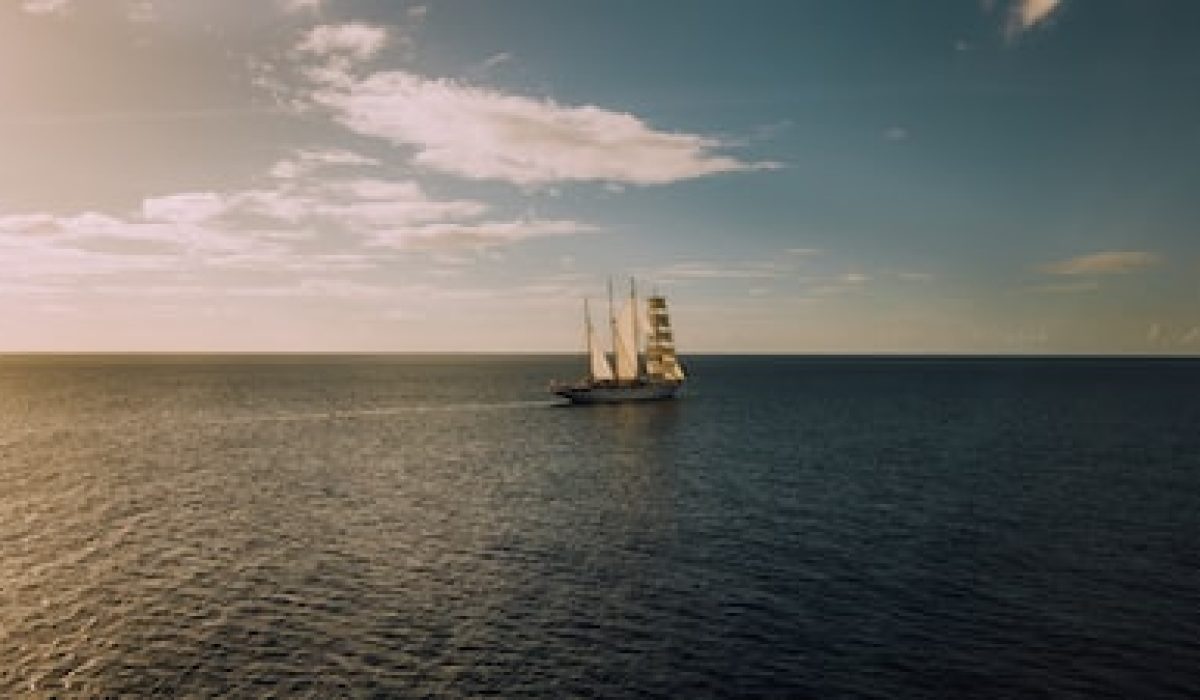Introduction to Sailing: A Journey into the World of Recreational Adventure
Sailing, an ancient practice that has captured the hearts of countless individuals seeking a unique recreational experience, offers a gateway to adventure like no other. In this blog post, we will dive into the captivating world of sailing, exploring its various aspects and uncovering the possibilities it holds. From choosing the perfect sailboat for your adventure to mastering advanced navigation and seamanship skills, this post aims to serve as a comprehensive guide for both novice and seasoned sailors alike. So, hop on aboard as we set sail on a thrilling journey of discovery, freedom, and endless adventure.
Introduction To Sailing As A Recreational Activity
Sailing is a recreational activity that has been enjoyed by people around the world for centuries. It offers a unique and exhilarating experience, allowing individuals to harness the power of the wind and navigate through the water. Whether you are a seasoned sailor or have never set foot on a sailboat, this blog post will serve as an introduction to the world of sailing as a recreational activity.
Why choose sailing as a recreational activity?
Sailing offers a range of benefits that make it an appealing recreational activity for many. Firstly, it allows individuals to connect with nature and enjoy the serenity of being out on the open water. The feeling of the wind in your sails and the sound of the waves against the hull creates a sense of freedom and tranquility like no other. Additionally, sailing provides a unique opportunity to learn new skills and challenge yourself both mentally and physically. The combination of teamwork, problem-solving, and the constant need to adapt to changing conditions makes sailing a mentally stimulating activity.
Getting started with sailing
If you are new to sailing, it is important to start with the basics. Familiarize yourself with the different types of sailboats and their characteristics to choose the right sailboat for your adventure. Whether you opt for a small dinghy or a larger keelboat, each type has its own unique features and advantages.
Once you have chosen a sailboat, it is essential to learn the fundamentals of navigation and safety. Understanding the different parts of a sailboat, basic maneuvers, and how to handle wind and waves are vital skills for any sailor. It is also important to be aware of safety precautions such as wearing life jackets, knowing how to respond to emergencies, and understanding the rules of the water.
Embarking on your first sailing trip
Planning and preparation are key when it comes to embarking on your first sailing trip. Consider factors such as weather conditions, destination, and the duration of your journey. It is advisable to start with shorter trips to build your confidence and gradually increase the complexity of your sailing adventures.
Before setting sail, ensure your sailboat is well-equipped with essential supplies, including food, water, first aid kits, and safety equipment. It is also important to familiarize yourself with local regulations and obtain any required permits or licenses.
Choosing The Right Sailboat For Your Adventure ⏬
Choosing the right sailboat for your adventure is an important decision that can greatly impact your overall sailing experience. Whether you are a beginner or an experienced sailor, selecting the right sailboat will ensure a comfortable and enjoyable journey. There are several factors to consider when choosing a sailboat, including the type of sailing you plan to do, the size of the boat, and your budget.
Type of Sailing: Before purchasing a sailboat, it is crucial to determine the type of sailing you plan to engage in. Are you interested in leisurely day sails, offshore cruising, or perhaps even racing? Each type of sailing requires a different type of sailboat. Day sailors are usually smaller and simpler, designed for short trips and recreational outings. On the other hand, offshore cruisers are equipped with more amenities and storage space to accommodate longer journeys.
Size of the Boat: The size of the sailboat also plays a significant role in your sailing experience. Larger boats offer more space and stability, providing a comfortable living arrangement for extended trips or living aboard. However, larger boats can be more challenging to maneuver, requiring more crew members and expertise. Smaller sailboats, on the other hand, are easier to handle, making them ideal for beginners or those looking for a more intimate and agile sailing experience.
Budget: Your budget will ultimately determine the options available to you when choosing a sailboat. Sailboats come in a wide range of prices, from affordable used boats to luxurious yachts. It is essential to determine your budget and be realistic about the ongoing costs of owning and maintaining a sailboat. Consider not only the initial purchase price but also expenses such as mooring fees, insurance, maintenance, and upgrades. Assessing your budget beforehand will help you narrow down your options and make a more informed decision.
- In conclusion, choosing the right sailboat for your adventure is a decision that should not be taken lightly. Consider the type of sailing you plan to do, the size of the boat, and your budget before making a purchase. Remember to thoroughly research and inspect any sailboat you are interested in, and if possible, take it for a test sail. Choosing the perfect sailboat will enhance your sailing experience, making every journey a memorable and enjoyable one.
| Type of Sailing | Size of the Boat | Budget |
|---|---|---|
| Day Sails, Offshore Cruising, Racing | Small for agility, Large for comfort | Consider initial purchase price and ongoing expenses |
| Ensure the sailboat suits your intended purpose | Balance between comfort and maneuverability | Realistically assess your financial capabilities |
Learning The Basics Of Sailing: Navigation And Safety ⏬
Sailing is a popular recreational activity that allows individuals to experience the thrill of navigating the open waters. Whether you’re a beginner or an experienced sailor, learning the basics of sailing, including navigation and safety, is essential to ensure a successful and enjoyable trip.
Navigation
One of the key aspects of sailing is navigation. It involves charting your course, determining your position, and planning your route. Navigation tools such as charts, compasses, and GPS devices are invaluable for sailors. Charts provide detailed information about the water depths, buoys, landmarks, and potential hazards along your route. A compass helps you maintain your desired heading and determine your direction. GPS devices are extremely useful in pinpointing your exact location on the water.
Safety
Ensuring safety is paramount when sailing. Before embarking on any sailing trip, it is important to check the weather conditions, including wind speed, wave height, and any potential storms. Wearing appropriate safety gear, such as life jackets and harnesses, is essential for everyone on board. Familiarize yourself with the International Regulations for Preventing Collisions at Sea (COLREGs) to understand the rules and responsibilities of all vessels on the water. It is also crucial to have a thorough knowledge of basic first aid and emergency procedures, including man overboard drills and distress signals.
Conclusion
Learning the basics of sailing, including navigation and safety, is crucial for anyone venturing out onto the open waters. By understanding how to navigate using tools such as charts, compasses, and GPS devices, sailors can confidently plan and execute their trips. Additionally, prioritizing safety by checking weather conditions, wearing appropriate safety gear, and being familiar with COLREGs ensures a safe and enjoyable sailing experience. So, whether you’re embarking on a day trip or planning a longer adventure, always remember to sail smart and stay safe.
Embarking On Your First Sailing Trip: Planning And Preparation
Embarking On Your First Sailing Trip: Planning And Preparation
Sailing as a recreational activity can be an exciting and fulfilling experience. Whether you are a seasoned sailor or a novice, embarking on your first sailing trip requires careful planning and preparation. From choosing the right sailboat to understanding navigation and safety, there are several important factors to consider before setting sail. In this blog post, we will guide you through the essential steps to ensure a smooth and enjoyable voyage.
Sailboat selection: The first step in planning your sailing trip is choosing the right sailboat. Consider the size, type, and capabilities of the sailboat based on your experience level and the duration of your trip. If you are new to sailing, it is recommended to opt for a smaller and more manageable sailboat. Additionally, ensure that the sailboat is well-maintained and equipped with necessary safety gear.
Navigation and safety: Familiarize yourself with the basics of navigation and safety before setting out on your sailing adventure. Understand different types of charts, navigational aids, and compass usage. Being knowledgeable about safe boating practices, including understanding weather patterns and tidal currents, is crucial for a successful trip. Consider taking a sailing course or consulting with experienced sailors to enhance your navigation and safety skills.
Planning and preparation: Careful planning and preparation are key to a successful sailing trip. Determine your desired route, taking into account factors such as prevailing winds, currents, and potential hazards. Create a comprehensive itinerary, noting down essential details such as anchorages, fuel stops, and provisioning locations. Make sure to check the weather forecast beforehand and have alternative plans in case of unexpected changes in weather conditions.
- Proper equipment and supplies: Pack all the necessary equipment and supplies for a comfortable and safe journey. This includes life jackets, first aid kits, navigation tools, communication devices, and extra clothing. Ensure that your boat is equipped with a functioning marine radio and that you have the necessary knowledge to use it in case of emergencies.
- Provisioning: Make a detailed list of food, water, and other provisions you will need during the trip. Consider the duration of the journey and the number of people on board when planning meals. Opt for non-perishable and easy-to-store items that require minimal preparation. It is also advisable to carry extra provisions in case of unforeseen circumstances or potential delays.
- Crew and communication: If you are not sailing solo, ensure that all members of your crew are well-informed about their roles and responsibilities. Establish clear communication protocols and discuss emergency procedures. It is essential to have a designated person on board with knowledge of basic first aid and emergency response.
| Checklist: | Description: |
|---|---|
| Sailboat inspection: | Thoroughly inspect the sailboat for any signs of damage or malfunction. Check the rigging, sails, engine, and electrical systems to ensure they are in proper working order. |
| Communication devices: | Check the functioning of communication devices such as marine radio, GPS, and cell phones. Ensure that they are fully charged and have appropriate backups. |
| Safety equipment: | Ensure that all required safety equipment, including life jackets, flares, fire extinguishers, and emergency signaling devices, are present and in good condition. |
| Proper documentation: | Carry all necessary documents, such as boat registration, sailing permits, and identification papers, and store them in a waterproof container. |
By following these essential steps and ensuring thorough planning and preparation, you can embark on your first sailing trip with confidence. Remember to always prioritize safety and stay vigilant while enjoying the beauty and freedom of sailing.
Experience The Thrill Of Racing: Sailing Competitions And Regattas
When it comes to experiencing the thrill of racing, sailing competitions and regattas offer a unique and exhilarating experience for sailing enthusiasts. Whether you are a seasoned sailor or a beginner, participating in these events can provide you with an opportunity to test your skills, compete against other sailors, and immerse yourself in the exciting world of competitive sailing.
Sailing competitions and regattas are organized events that bring together sailors from various backgrounds and experience levels. These events can range from local races held on a regular basis to prestigious international regattas that attract sailors from around the world. Regardless of the scale, the essence of these events remains the same – to provide a platform for sailors to showcase their skills and compete for victory.
Participating in a sailing competition or regatta requires careful planning and preparation. Before entering such an event, it is essential to ensure that your sailboat is in optimal condition and meets the necessary safety requirements. Conducting a thorough inspection of your vessel, including its rigging, sails, and hardware, is crucial to avoid any potential issues during the race. Additionally, familiarizing yourself with the racing rules and regulations specific to the event you are participating in is essential to ensure fair competition and compliance with the established guidelines.
- First and foremost, choosing the right sailboat for racing is of utmost importance. The type of sailboat you select should be suited to the racing conditions and your level of expertise. Sailboats used in competitions are often lighter and faster than traditional cruising sailboats, allowing for greater speed and maneuverability during the race. Consulting with experienced racers or sailing experts can help you make an informed decision when it comes to selecting the most suitable sailboat for your racing adventure.
- Furthermore, learning the basics of navigation and safety is crucial for any sailor participating in a racing event. Sailing competitions and regattas often take place in open water, where knowledge of navigation techniques and safety protocols is paramount. Understanding how to read nautical charts, navigate using compasses and GPS systems, and respond to changing weather conditions is imperative to ensure a safe and successful racing experience.
- Lastly, embracing the spirit of competition and sportsmanship is vital when participating in sailing races. These events offer an excellent opportunity to learn from experienced sailors, observe different tactics, and refine your sailing skills. Taking part in sailing competitions and regattas not only allows you to push your limits but also fosters camaraderie and a sense of community among fellow sailors. It is essential to approach these events with an open mind, ready to learn, adapt, and embrace the thrill of racing.
| Key Takeaways: |
|---|
| 1. Sailing competitions and regattas provide an exhilarating experience for sailing enthusiasts. |
| 2. Careful planning and preparation are crucial before participating in a racing event. |
| 3. Choosing the right sailboat and learning navigation and safety basics are essential for racing. |
| 4. Embracing the spirit of competition and sportsmanship is vital in racing events. |
Discovering Hidden Gems: Exploring Remote Islands And Coastal Destinations
Sailing as a recreational activity offers a unique opportunity to explore remote islands and coastal destinations, allowing adventurers to discover hidden gems that are otherwise inaccessible. Whether you are a seasoned sailor or a beginner, there is something enchanting about setting sail into the unknown, navigating through crystal-clear waters and immersing yourself in the natural beauty of untouched landscapes. This blog post will delve into the thrill and rewards of exploring remote islands and coastal destinations through sailing.
When it comes to discovering hidden gems, sailing offers a level of freedom and flexibility that other forms of travel cannot replicate. With a sailboat as your mode of transportation, you have the freedom to chart your own course and explore secluded coves, pristine beaches, and untouched ecosystems. The ability to anchor in secluded bays or sail into remote island harbors is an experience like no other. As you venture further away from the bustling cities and tourist hotspots, you will gain a deeper appreciation for the natural wonders that exist off the beaten path.
Exploring remote islands and coastal destinations allows you to immerse yourself in the local culture and connect with the people who call these hidden gems home. While sailing from one destination to another, you have the opportunity to meet fellow sailors, locals, and maritime enthusiasts, all of whom have their own stories to tell. Whether it’s exchanging sailing tips, learning about traditional fishing techniques, or simply sharing a meal with friendly locals, these interactions add a layer of authenticity to your sailing adventure.
- Sailing allows you to access remote islands and coastal destinations that are often untouched by mass tourism.
- Anchor in secluded bays and explore pristine beaches that are only accessible by boat.
- Immerse yourself in the local culture and connect with the people who call these hidden gems home.
| Benefits of exploring hidden gems through sailing: |
|---|
| 1. Freedom and Flexibility: Sailing provides the freedom to chart your own course and explore at your own pace, allowing you to discover hidden gems that are off the usual tourist trail. |
| 2. Immersion in Nature: By sailing to remote islands and coastal destinations, you are able to immerse yourself in the natural beauty of untouched landscapes, from breathtaking sunsets to vibrant coral reefs. |
| 3. Authentic Cultural Experiences: Meeting locals and gaining insights into their way of life adds a sense of authenticity to your sailing adventure, allowing you to experience different cultures firsthand. |
Mastering Advanced Sailing Techniques: Navigation And Seamanship Skills
Sailing has been a popular recreational activity for centuries, providing individuals with a unique connection to the sea and a sense of freedom. For those who have already mastered the basics of sailing and are seeking to enhance their skills, mastering advanced sailing techniques such as navigation and seamanship is essential. These skills not only improve one’s ability to handle a sailboat but also enable sailors to embark on more challenging and adventurous journeys.
When it comes to navigation in sailing, understanding how to read and interpret nautical charts is crucial. Nautical charts provide detailed information about water depth, topographical features, buoys, and other navigational aids. By studying and familiarizing oneself with these charts, sailors can navigate safely and efficiently through various waterways, even in unfamiliar territories.
In addition to nautical charts, sailors also rely on navigation instruments such as compasses, GPS devices, and electronic chart plotters. These tools help sailors determine their position, plot courses, and keep track of their progress. By mastering the use of these instruments, sailors can sail confidently and accurately, even in challenging weather conditions or during nighttime passages.
Navigation Tools: Description: Compass A magnetic instrument used for determining direction. GPS Device A Global Positioning System device that uses satellite signals to determine precise location. Electronic Chart Plotter An electronic device that displays navigational charts and aids in route planning.
Seamanship skills are equally important when it comes to mastering advanced sailing techniques. These skills encompass a wide range of abilities, including sail handling, anchoring, docking, and maneuvering. By practicing and perfecting these skills, sailors can handle their sailboats with ease and confidence in any situation.
One crucial aspect of seamanship is understanding and utilizing the power of the wind. Being able to trim and adjust the sails according to wind conditions not only maximizes the boat’s speed but also ensures its stability and safety. Moreover, maintaining proper balance and weight distribution on the boat is essential for stability and maneuverability.
Lastly, acquiring knowledge of emergency procedures and safety protocols is imperative for any sailor aspiring to master advanced sailing techniques. Being prepared for unexpected events such as storms, equipment failures, or medical emergencies can make a significant difference in the outcome of a sailing trip. By familiarizing oneself with safety equipment, procedures, and best practices, sailors can mitigate risks and ensure their own well-being and that of their crew.
In conclusion, mastering advanced sailing techniques, particularly navigation and seamanship skills, is essential for those seeking to take their sailing adventures to the next level. By honing these skills, sailors can navigate through unfamiliar waters, handle challenging weather conditions, and ensure the safety and enjoyment of their sailing journeys. Whether it’s exploring remote islands or participating in sailing competitions, the knowledge and proficiency gained from mastering these techniques open up a world of possibilities for sailors eager to embrace the challenges and rewards of advanced sailing.
Embrace The Freedom: Living Aboard A Sailboat Full-Time
Living aboard a sailboat full-time is a dream for many adventurous souls. The idea of waking up to the sound of waves, feeling the gentle rocking of the boat, and setting sail to new destinations is undeniably alluring. It offers a unique sense of freedom that cannot be matched by any other lifestyle. But before you untie those dock lines, it’s important to understand what it truly means to live aboard a sailboat full-time.
Choosing the Right Sailboat
When considering living aboard a sailboat, choosing the right vessel is crucial. You’ll want a sailboat that is not only comfortable but also suits your needs and preferences. Factors to consider include the size of the boat, its layout, storage space, and overall seaworthiness. It’s important to find a sailboat that can withstand different weather conditions and provide the necessary amenities for your daily life aboard.
Adapting to a Unique Lifestyle
Living aboard a sailboat full-time requires a certain level of adaptability and resourcefulness. Space on a sailboat is limited compared to a traditional home, so downsizing and simplifying your belongings is essential. You’ll need to learn how to maximize storage space and be mindful of your energy and water usage. Additionally, living aboard a sailboat means being prepared for constant movement and adjusting to life at sea.
Embracing Minimalism
Living on a sailboat full-time often means embracing a minimalist lifestyle. With limited space and storage options, you’ll need to prioritize your belongings and learn to live with only the essentials. This can be incredibly liberating, as it allows you to declutter your life and focus on what truly matters. Embracing minimalism also means being mindful of your environmental impact, as you rely on nature for your daily needs.
Advantages of Living Aboard Challenges to Consider
Building Community
While living aboard a sailboat full-time can offer a sense of seclusion, it’s important to build and maintain a strong community. Connect with fellow liveaboards, both in person and online, to share experiences, advice, and support. Participating in local marina events, sailing clubs, and sailing communities can help create a sense of belonging and provide a network of like-minded individuals.
Conclusion
Living aboard a sailboat full-time is a lifestyle that allows you to embrace the freedom, simplicity, and adventure that comes with sailing. It requires careful consideration in choosing the right sailboat, adapting to a unique lifestyle, and embracing minimalism. While there are challenges to navigate, the rewards of living aboard are immeasurable. It offers the opportunity to explore new horizons, forge lasting connections, and experience life from a different perspective.
Frequently Asked Questions
What is the appeal of sailing as a recreational activity?
Sailing offers a sense of freedom and adventure, allowing individuals to explore the open waters and connect with nature.
How do I choose the right sailboat for my sailing adventure?
Consider factors such as boat size, type of rigging, desired features, and intended use to find a sailboat that suits your needs and experience level.
What are the basics of sailing in terms of navigation and safety?
Understanding navigational tools, weather patterns, rules of the road, and safety protocols are essential for a successful and safe sailing experience.
What should I consider when planning and preparing for my first sailing trip?
Planning your route, checking weather forecasts, ensuring necessary supplies and equipment, and conducting a thorough safety check are crucial steps before embarking on a sailing trip.
How can I participate in sailing competitions and regattas?
Get involved in local sailing clubs, seek training and practice, and register for sailing competitions and regattas to experience the thrill of racing and test your skills against fellow sailors.
How can sailing help me discover remote islands and coastal destinations?
Sailing allows access to hidden gems and remote locations, providing unique opportunities to explore untouched islands and coastal areas that may be inaccessible by other means of transportation.
What are the advanced sailing techniques that can be mastered to enhance navigation and seamanship skills?
Mastering advanced sailing techniques such as heavy weather sailing, spinnaker handling, and understanding sail trim can improve your overall sailing ability and enhance your seamanship skills.
Is it possible to live full-time aboard a sailboat?
Living aboard a sailboat full-time is indeed possible, offering a lifestyle of freedom, simplicity, and the opportunity to explore various coastal areas and distant destinations.




